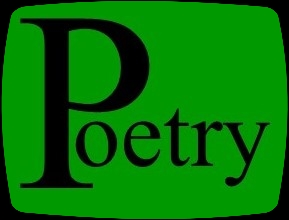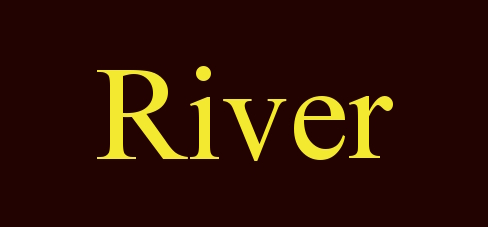|
|
|
|
|

|

|
|
|
|
|
|

Definition Of Art
|
art noun : something that is created with imagination and skill and that is beautiful or that expresses important ideas or feelings : works created by artists : paintings, sculptures, etc., that are created to be beautiful or to express important ideas or feelings : the methods and skills used for painting, sculpting, drawing, etc. art noun (Concise Encyclopedia) A visual object or experience consciously created through an expression of skill or imagination. The term art encompasses diverse media such as painting, sculpture, printmaking, drawing, decorative arts, photography, and installation. The various visual arts exist within a continuum that ranges from purely aesthetic purposes at one end to purely utilitarian purposes at the other. This should by no means be taken as a rigid scheme, however, particularly in cultures in which everyday objects are painstakingly constructed and imbued with meaning. Particularly in the 20th century, debates arose over the definition of art. Figures such as Dada artist Marcel Duchamp implied that it is enough for an artist to deem something “art” and put it in a publicly accepted venue. Such intellectual experimentation continued throughout the 20th century in movements such as conceptual art and Minimalism. By the turn of the 21st century, a variety of new media (e.g., video art) further challenged traditional definitions of art. - Merriam-Webster NOUN 1The expression or application of human creative skill and imagination, typically in a visual form such as painting or sculpture, producing works to be appreciated primarily for their beauty or emotional power: the art of the Renaissance great art is concerned with moral imperfections she studied art in Paris MORE EXAMPLE SENTENCES 1.1Works produced by human creative skill and imagination: his collection of modern art an exhibition of Mexican art [AS MODIFIER]: an art critic MORE EXAMPLE SENTENCES 1.2Creative activity resulting in the production of paintings, drawings, or sculpture: she’s good at art MORE EXAMPLE SENTENCES 2 (the arts) The various branches of creative activity, such as painting, music, literature, and dance: the visual arts [IN SINGULAR]: the art of photography - Oxford Dictionaries Stanford Encyclopedia of Philosophy Contemporary definitions are of two main sorts. One distinctively modern, conventionalist, sort of definition focuses on art's institutional features, emphasizing the way art changes over time, modern works that appear to break radically with all traditional art, and the relational properties of artworks that depend on works' relations to art history, art genres, etc. The less conventionalist sort of contemporary definition makes use of a broader, more traditional concept of aesthetic properties that includes more than art-relational ones, and focuses on art's pan-cultural and trans-historical characteristics. 5. Conclusion Conventionalist definitions account well for modern art, but have difficulty accounting for art's universality – especially the fact that there can be art disconnected from “our” (Western) institutions and traditions, and our species. They also struggle to account for the fact that the same aesthetic terms are routinely applied to artworks, natural objects, humans, and abstracta. Aesthetic definitions do better accounting for art's traditional, universal features, but less well, at least according to their critics, with revolutionary modern art; their further defense requires an account of the aesthetic which can be extended in a principled way to conceptual and other radical art. (An aesthetic definition and a conventionalist one could simply be conjoined. But that would merely raise, without answering, the fundamental question of the unity or disunity of the class of artworks.) Which defect is the more serious one depends on which explananda are the more important. Arguments at this level are hard to come by, because positions are hard to motivate in ways that do not depend on prior conventionalist and functionalist sympathies. If list-like definitions are flawed because uninformative, then so are conventionalist definitions, whether institutional or historical. Of course, if the class of artworks is a mere chaotic heap, lacking any genuine unity, then enumerative definitions cannot be faulted for being uninformative: they do all the explaining that it is possible to do, because they capture all the unity that there is to capture. In that case the worry articulated by one prominent aesthetician, who wrote earlier of the “bloated, unwieldy” concept of art which institutional definitions aim to capture, needs to be taken seriously, even if it turns out to be ungrounded: “It is not at all clear that these words – ‘What is art?’ – express anything like a single question, to which competing answers are given, or whether philosophers proposing answers are even engaged in the same debate…. The sheer variety of proposed definitions should give us pause. One cannot help wondering whether there is any sense in which they are attempts to … clarify the same cultural practices, or address the same issue.” (Walton, 1977, 2007) From Wikipedia Art is a diverse range of human activities and the products of those activities; this article focuses primarily on the visual arts, which includes the creation of images or objects in fields including painting, sculpture, printmaking, photography, and other visual media. Architecture is often included as one of the visual arts; however, like the decorative arts, it involves the creation of objects where the practical considerations of use are essential—in a way that they usually are not in a painting, for example. Music, theatre, film, dance, and other performing arts, as well as literature and other media such as interactive media, are included in a broader definition of art or the arts.[1] Until the 17th century, art referred to any skill or mastery and was not differentiated from crafts or sciences. In modern usage after the 17th century, where aesthetic considerations are paramount, the fine arts are separated and distinguished from acquired skills in general, such as the decorative or applied arts. © 2010 Glen River | ||